Default logins for 192.168.1.1
Dedicated IP Addresses For Accessing Router Settings
IANA, i.e. the Internet Assigned Number Authority, has kept aside a set of IP Addresses for various reasons, including the creation of a dedicated address for logging into your router’s control panel.
Typically, 192.168.1.1 is the IP address for a router’s login page - once the user enters their username and password, the page redirects to the settings and configuration page.
The problem is that most people get it wrong on the first try because of human error and maybe even auto-correct suggestions - they end up entering 192.168.l.1 Instead of 192.168.1.1.
This is because the number “1” and the letter “l” look quite alike, so when people read out the IP address on screen or from the router’s box, they tend to interchange the two.
Here are some commonly misspelled IP entries, and their corrections:
Incorrect: 192.168.I.1
Correct: 192.168.1.1
Incorrect: http://192.168.I.1
Correct: http://192.168.1.1
Incorrect: https://192.168.l.1
Correct: https://192.168.1.1
Incorrect: 192.168.l.1 login
Correct: 192.168.1.1 login
Accessing The Router’s Control Panel
Generally, you may want to access your router’s control panel to assign a new password, allow or limit access to new users, reset the router, and change other configuration options.
The good news is that you do not need to be tech-savvy to amend your settings, it’s a straight forward process, you need to ensure that you are not typing in a misspelled IP address.
Let’s go through each step in detail.
1 What Can Be Done From There?
Completing The Login Process
If you are trying to reach your router’s dashboard via 192.168.1.1, we suggest you take the following steps:
Open the browser
- Enter 192.168.1.1
- Enter your ID and Password – Usually available beneath the router, in its manual or on the box it came in
- Reach the settings and configuration page
Remember, if your login credentials are not correct, you cannot reach the router’s control panel.
Assigning Usernames, Changing Passwords, And Resetting The Router
If you're not receiving the optimal speed assigned by your service provider, and the issue is not at their end, the chances are that your router is acting up.
One quick fix is to turn it off and turn it on again, but if that does not work, protocol dictates that you should reset your router. Once you are on the settings page you are given the option of rebooting the router or carrying out a complete factory-rest.
You may also use the settings page to add a new password, change an old password or assign a new name to your router. For instance, you can change the username from Asus or Netgear to your family name, brand name, etc.
Your neighbors might be using your internet because you have not restricted access with a password, or your current password has been breached.
Not only can you change the password from the dedicated dashboard, but you can also view user activity to see who else is using your network.
Routers Assigned With 192.168.1.1 As A Default Gateway
The problem is that many famous brands such as Linksys, D-link, Asus, Netgear, and TP-Link have also dedicated the 192.168.1.1 address for reaching the configuration page on their devices.
Had they used other numbers that didn’t resemble 192.168.1.1, the occurrence of misspelled IP’s could have been limited.
If you don’t know what your IP address is, and 192.168.1.1 is not the one assigned to your router, you can locate the IP by using Command Prompt and taking these steps:
- Enter ipconfig in command prompt
- Scroll through the list of Displayed IPs
- Find one that says “Default Gateway.”
Well, there you have it, just make sure you enter the right IP, and not something like 192.168.l.1.
Brands using 192.168.1.1

3Com

AboCom

Accton

Acelink

Acer

Actiontec

ADB

Addon

ADI Engineering

Adtran

Advantech

Aerohive

Airlink

Airlink+

Airlink101

Airnet

AirTies

Alcatel

Alcatel-Lucent

ALFA Network

Alice

Allied Telesis

Allnet

Alpha

Altice Labs

Amigo

AMRISC

AOpen

APC

Apple

Araknis Networks

Arcadyan

AsiaRF

Askey

ASRock

ASUS

Atheros

ATRON

attwifimanager

Autonet

AWB

Aztech

Banana Pi

BandLuxe

BaudTec

BCM

Beeline

BelAir Networks

BenQ

Billion

Bitdefender

Blanc

Bleuciel

Blitzz

Bountiful

Broadcom
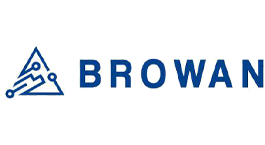
Browan
Budget
Budget 1 Wireless

Buffalo

Calix

Cameo

CastleNet

Cellvision

Charter

China Telecom

ChipSiP

Circle Media

Cisco

ClearAccess

CNet

Coexistence

Compaq

Compex

Comtrend

Comtrendc

Connected IO

Connectland

Corega

Creative

CyberTAN

CZ.NIC

DareGlobal

DirecTV

D-Link

DQ Technology

DrayTek

Dynalink

DZS

ECI

Edgewater Networks

Edimax

EE

Elecom

E-Lins

Eltel

EMC Tech

Encore

EnGenius

Enterasys

Ericsson

E-TOP

Eumitcom

FAST

FiberHome

Firefly

Flyingvoice

FMI

Fonera

Foxconn

Free

Freebox

F-Secure

FTZ Oplink

Furrion

Gateway

Gateworks

Gemtek

getnet

Gigaset

Global Sun


Google Fiber

Gryphon Online Safety

Gstar Technology

H3C

Hame

Hawking

Honeywell

Hongdian

HP

Huawei

Humax

IBM

iBoss

iiNet

innacomm

innoband

Inseego

Intelligent Technology

Intermec

Intex

IP-COM

ISONWIFI

Itian

JCG

Jensen

Jetstream

Jize

Kasda

Keewifi

Kozumi

KZTECH

L7 Networks

Lava

Layer3 TV

Lenovo

LevelOne

Linking

Linksys

Lippert Components

Logitec

LOUD Audio

Luma

MacSense

Medion

Meraki

Mercku

Mercury

Microlink

Micronet

miniDSP

MitraStar

Mocet

MoFi Network

Motorola

Movistar

MQmaker

MSI

Myfiosgateway
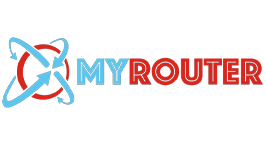
Myrouter

NAG

National Datacomm

NEC

NEC AccessTechnica

Netcore

Netgear
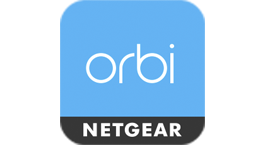
netgear-orbi

Netis

Netopia

Netronix

Netsys

NetweeN

Network Everywhere

Net Zen
Newer Technology

newifi

Nexaira

Nokia

Norton

Norton Core

Nuvo

Onelink
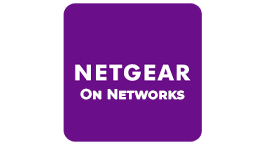
On Networks

Open-Mesh

Option

Orange

Orange (manufactured by Sagemcom)

Pace Americas

pakedge

Paradigm

Paradyne

Perfect

PHICOMM

Philips

Pioneer

Pirelli

Planet

Planex

Plume

Poray

PRO-NETS

Proware

QTECH

RadioLabs

Razer

ReadyNet

Roqos

Rosewill

Runtop

Sagemcom

Salt

SAPIDO

SerComm

SFR

Shanghai DareGlobal Technologies

Shenzhen

Shenzhen DareGlobal Technologie

Shenzhen DareGlobal Technologies

Shenzhen Gongjin Electronics

Shenzhen MTN Electronics

Shiko

Siemens

Siligence SAS

SimpliNET

SmartRG

SOHOware

SparkLAN

spectrum

Sputnik

SUNMI

Synology

technicolor

Tecom

Telsey

Tenda

Texas Instruments

Tilgin

TOTOLINK

TP-LINK

TPlinkrepeater

TRENDnet

TROY Wireless

Turris

Ubiquiti Networks

Unbranded

Uniden

UPVEL

USRobotics

UTT

ViewSonic

VisionNet

Visonicom

VIZIO

Well Communications

Westell

Western Digital

Wippies
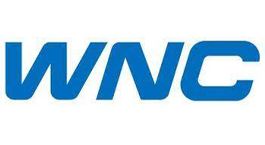
Wistron NeWeb

WondaLink

XAVi

X-Micro

ZBT

Z-Com

Zero

Zero One Technology

Zhuhai

Zhuhai FTZ Oplink Communications

Zinwell

Zonet

Zoom

ZTE

ZyXEL
FAQ IP adddress
1. What is 192.168.l.l?
192.168.1.1 is a default IP address. The IP address always contains 4 sets of numbers ranging between 0 and 255. This is because each device connected to the internet is supposed to have a unique address. So, the first three sets are the network id, and the last set is the device id. In 192.168.1.1 the network id is 192 and the device id is 168.1.1
2. How to log in to 19168.l.l / How to login into 19168.l.l / How to use 19168.l.l
First, type 192.168.1.1 in your browser’s address bar. Then, enter username and password, and then click OK or Login.
3. What are the (most common) default logins for 192.168.l.l?
The most common default logins for 192.168.1.1 IP address are Username: admin, Password: admin
4. What is the (most common) default username for 192.168.l.l?
The most common default username for 192.168.1.1 address is admin
5. What is the (most common) default password for 192.168.l.l?
The most common default password for 192.168.1.1 address is admin
6. 192.168.l.l - How to Access Router IP Address?
First, type 192.168.1.1 in your browser’s address bar, Then, enter your username and password, and then click OK or LOGIN. The most common default logins to access 192.168.1.1 are - username: admin, password: admin
7. How to login into 192.168.l.l / Hot to go to 192.168.l.l / How to use 192.168.l.l
First, type 192.168.1.1 in your browser’s address bar, Then, enter your username and password, and then click OK or LOGIN. The most common default logins to access 192.168.1.1 are - username: admin, password: admin
